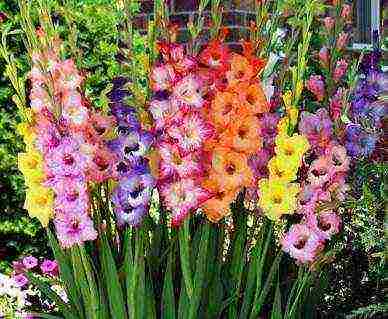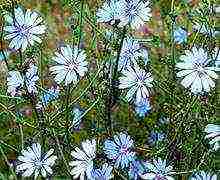According to information from the Ministry of Agricultural Production and Rural Development of the Khabarovsk Territory, the most promising areas of agricultural production in the Territory are dairy and beef cattle breeding, as well as indoor and outdoor vegetable growing.
In the areas of development of the agro-industrial cluster of the city of Komsomolsk-on-Amur, it is advisable to grow the following crops:
- potato;
- vegetables (cabbage, carrots, beets);
- grain crops (barley, wheat, oats);
- fodder crops: corn for silage, annual grasses (oats mixed with peas), perennial grasses (awnless rump, timothy grass, meadow fescue, bluegrass, foxtail);
- fodder root crops (turnips, kuuzika, fodder beets).
In addition, the Far Eastern Research Institute of Agriculture is currently conducting pilot studies of zoned soybean varieties adapted for cultivation in the central regions of the Khabarovsk Territory.
The foundation of food safety
Information on the current situation in the agro-industrial complex of the Khabarovsk Territory for 2016
In 2016, the production of agricultural products in farms of all categories in current prices amounted to 21,699.6 million. rubles (92.7% to the level of 2015).
The production of the main types of crop production in farms of all categories was:
- grain and leguminous crops - 11.9 thousand tons, including in agricultural organizations - 9.5 thousand tons;
- soybeans - 26.0 thousand tons, including in agricultural organizations - 16.8 thousand tons;
- potatoes - 223.9 thousand tons, including in agricultural organizations - 4.6 thousand tons;
- vegetables - 58.8 thousand tons, including in agricultural organizations - 2.7 thousand tons;
The production of the main types of livestock products in farms of all categories was:
- milk - 37.7 thousand tons, including in agricultural organizations - 19.0 thousand tons;
- livestock and poultry meat - 25.0 thousand tons;
- eggs - 279.2 million pieces, including in agricultural organizations - 261.8 million pieces.
The average milk yield per cow in agricultural organizations amounted to 3,349 kilograms (3.3% higher than in 2015).
The average egg production of laying hens in agricultural organizations was 307 pieces.
As of 01.01.2017, the number of livestock in all categories of farms was:
- cattle - 20.6 thousand heads, including in agricultural organizations - 11.4 thousand heads;
- cows - 9.7 thousand heads, including in agricultural organizations - 5.3 thousand heads;
- pigs - 53.1 thousand heads, including in agricultural organizations - 38.9 thousand heads;
- poultry - 1 430.4 thousand heads, including in agricultural organizations - 1 314.5 thousand heads.
Price situation
Average producer prices for agricultural products sold in December 2016 were:
- milk - 29,674 rubles per 1 ton (an increase by 3.1% against November 2016);
- chicken eggs - 5625 rubles per 1,000 pieces (an increase by 16.0% against November 2016).
Investment activities
The volume of attracted investments for the implementation of major investment projects in the territory of the region at the expense of extra-budgetary funds amounted to 858.7 million rubles in 2016.
In 2016, the following investment projects were implemented:
1. Introduced the first stage greenhouse complex "JGC Evergreen" an area of 2.5 hectares, worth more than 500 million rubles, the volume of products (cucumbers, tomatoes) - 1.1 thousand tons of vegetables per year, the volume of investments under the project for 2016 - 126.0 million rubles. The volume of vegetable products produced amounted to 413.0 tons. The construction of the second stage of the greenhouse complex with an area of 2.5 hectares is planned for 2017.
2.Reconstruction of the third stage greenhouse complex "APK Vostok" LLC (Komsomolsk-on-Amur) with an area of 0.5 hectares and a vegetable storehouse for 1.0 thousand tons of storage. The total investment in the project in 2016 amounted to 20.1 million rubles. A trial run and variety trials for growing vegetables in the open field using low-volume technology with drip irrigation were carried out, a vegetable storehouse for 1.0 thousand tons was put into operation. The volume of vegetable products produced amounted to 83.2 tons.
3. Greenhouse complex for year-round production of green crops with an area of 1 hectare KFH Butkov V.B. The total investment in the project in 2016 amounted to 36.0 million rubles. In October 2016, the third stage of the greenhouse complex with an area of 0.4 hectares was commissioned, the first harvest was obtained in December 2016, the total volume of vegetable products produced in 2016 amounted to 180.0 tons.
The implementation of three investment projects in greenhouse vegetable growing allowed to increase the production of vegetables in the region by 1.2 percent.
4. LLC "Vector" launched an investment project for the construction and reconstruction of a highly efficient agro-industrial enterprise for 700 dairy cows and the construction of a vegetable storage facility for processing vegetables for 6400 tons per year. The planned capacity of the investment project is the production of 5.6 thousand tons of milk per year, meat - 100 tons per year. The project was recognized as a priority and large-scale for the provision of land plots for lease without bidding. The total investment in the project in 2016 amounted to 110.0 million rubles. The investor and the Ministry of Investment, Land and Property Policy of the Territory signed a lease agreement for land plots with a total area of 7914.8 hectares. Start of construction - April 2017.
5. Creation of a vertically integrated poultry complex for the production and processing of 13.7 thousand tons of turkey meat in live weight per year JSC "Khabarovsk Grain Processing Plant", the total investment in the project in 2016 amounted to 61.9 million rubles. For the implementation of the project, lease agreements for land plots were concluded in the area of them. Lazo; engineering surveys have been fully completed on the allocated land plots; urban planning plans of land plots were drawn up; technical specifications for the connection of the projected poultry complex facilities to engineering networks were obtained, as well as technical specifications for the connection of facilities to the street and road network; design and estimate documentation for the hatchery has been developed and submitted for examination. The start of construction, installation and commissioning is scheduled for March 2017.
(according to information from the Ministry of Agricultural Production and Rural Development of the Khabarovsk Territory).
Natural resources, economy and ecological state of the Khabarovsk Territory
essay
Agricultural production of the Khabarovsk Territory is developing in difficult natural and climatic conditions with a lack of arable land. There is an average of 0.07 hectares of arable land per inhabitant, which is almost 10 times less than the average for Russia. More than 30 percent of arable land is reclaimed land. The development of new, as well as the maintenance of the developed lands require large material costs. Agricultural production accounts for about 6 percent of the gross social product of the region. There are about
60 large agricultural enterprises of all forms of ownership, subsidiary farms of industrial enterprises and organizations and about 900 peasant (farmer) households. Agricultural production is carried out throughout the territory, but its main volumes are concentrated in the south of the region. Cattle and pigs are raised everywhere, and reindeer herding is practiced in the north.
The main crops cultivated in the region are cereals, soybeans, potatoes and vegetables. At the same time, a large share in the production of potatoes and vegetables falls on the private households of the population. The food industry of the Khabarovsk Territory is a complex diversified complex of enterprises (over 60) related to meat and dairy, flour and feed, fat and oil, confectionery, wine, bakery and other industries, whose products make up 40% of the food turnover. The most stable, steadily developing enterprises of the industry are: OJSC "Khabarovskmakaronservis", OJSC "Amur-pivo", OJSC "Taiga", OJSC
“Khabarovskiy distillery”, JSC “Dakgomz”. Livestock breeding has a dairy and meat direction. Poultry farming is intensively developing in suburban areas. The number of cattle amounted to 191 thousand (as of January 1, 1977), of which 74 thousand cows; pigs 182 thousand; birds 3004 thousand (as of January 1, 1976). A number of livestock enterprises have been built, including large poultry farms, milk and pork production complexes in the region of Khabarovsk and Komsomolsk-on-Amur. In the north of the region - reindeer herding (51.5 thousand heads as of January 1, 1976). In the region (southern and central regions) there are 13 beekeeping state farms, a significant part of honey and wax is exported outside the region, including for export. Important industries are animal husbandry and hunting. Fur farms breed minks, silver foxes. Hunting is a traditional occupation of the indigenous peoples of the North living in the territory of the region; hunt sable, squirrel, otter, etc.
4.3 Timber industry
More than 350 enterprises are engaged in the development of forest resources in the region for all types of use. On the territory of the Khabarovsk Territory, the main type of forest use is timber harvesting. In terms of logging volumes, the region ranks first in the Far East region. The number of the able-bodied population employed in the forestry complex is 22.2 thousand people or 4.6%.
The share of forestry products in the total industrial output of the region is estimated at 3%, which roughly corresponds to a similar indicator among other multi-forest regions of Russia. The Khabarovsk Territory produces 44% of all commercial timber harvested in the Far East, 35% of sawn timber, 63% of cellulose, 44% of chipboards, 65% of cardboard. The main enterprises of the complex are concentrated in its southern and central parts and gravitate towards railway transport routes and the sea coast.
At the same time, over the past 10 years, the forestry complex of the region has experienced a serious decline: the volume of timber transported has decreased 3.5 times, the production of sawn timber - 11 times, wood-based panels - 8 times. The structure of timber industry in the region is characterized by an extremely low level of processing of wood raw materials. Round timber (sawlogs, veneer logs and pulpwood) are almost entirely exported. This makes the economy of the forestry complex completely dependent on price conditions in foreign markets, and, above all, in Japan.
The main form of forest management is the lease of forest land plots. As of 01.01.2012, 240 plots were leased in the region for timber harvesting to 132 tenants, with the permitted annual felling volume of 11.6 million cubic meters.
The volume of production of softwood and hardwood logs in 2011 amounted to 6.0 million cubic meters (0.4 million cubic meters more than in 2010). Khabarovsk Territory is located in the forest zone. The permissible volume of annual felling in the forests of the region is set at 20.2 million cubic meters. m. However, it can be used only with the use of advanced technologies for felling and reforestation. The technologies applied at present make it possible to harvest 12-14 million cubic meters. m per year. Timber, woodworking and pulp and paper industries are the most developed industries in the Khabarovsk Territory, 12.3 mln.m3 (1975) of commercial timber. Logging is concentrated in the southern half of the region, mainly in the massifs that gravitate towards the railways, the Amur and its tributaries. Most of the timber is exported outside the region, mainly for export. The woodworking industry includes a group of enterprises (Tunguska, Khorsky, Amursky woodworking plants, Vaninsky forestry, Dormidontovsky, Bikinsky sawmills) that produce sawn timber, fiber boards, parquet, standard houses, containers, etc. The Mukhensky forestry and plywood mill in the village of Litovko. The Khorsky hydrolysis plant operates on production wastes. In Khabarovsk, Komsomolsk-on-Amur, Birobidzhan there are enterprises for the production of building parts and furniture. The pulp and paper industry is represented by the largest mill in the Far East in the city of Amursk. The prospects for the industry are associated with the further development of deep processing of wood, full use of all raw materials and production wastes.


